Discover the career path of Jim Inhofe, from the first major opportunity to industry-changing achievements.
James Mountain Inhofe was a prominent American politician who represented Oklahoma in the U.S. Senate from 1994 to 2023. As a Republican, he held the distinction of being Oklahoma's longest-serving U.S. Senator. His career in Oklahoma politics spanned nearly six decades, beginning in 1966 and continuing until his retirement in 2023. He held various elected positions within the state government before ascending to the national stage.
1956: Inhofe Received Draft Letter from the United States Army
In 1956, Jim Inhofe received a draft letter from the United States Army.
1956: Inhofe Drafted to the United States Army
In 1956, Jim Inhofe was drafted into the United States Army.
1957: Inhofe Served in the Army
From 1957 to 1958, Jim Inhofe served in the United States Army, attaining the rank of Specialist 4.
1957: Inhofe Served in the United States Army
In 1957, Jim Inhofe served in the United States Army.
1958: Inhofe Served in the Army
From 1957 to 1958, Jim Inhofe served in the United States Army, attaining the rank of Specialist 4.
1958: Inhofe Continued to Serve in the United States Army
In 1958, Jim Inhofe continued to serve in the United States Army.
1961: Inhofe Appointed Vice-President of Father's Insurance Company
In 1961, Jim Inhofe became vice-president of his father's insurance company, Quaker Insurance.
1961: Inhofe Appointed Vice President of Quaker Insurance
In 1961, Jim Inhofe was appointed vice president of Quaker Insurance, a new life insurance company formed by his father.
February 1966: Inhofe Launched First Campaign for Office
In February 1966, Jim Inhofe launched his first campaign for office as a Republican, running for the Oklahoma House of Representatives's 71st district.
November 1966: Inhofe Announced Campaign for McGraw's Former House Seat
In November 1966, after Joseph McGraw resigned, Jim Inhofe was the first to announce his campaign for McGraw's former Oklahoma House of Representatives seat.
December 29, 1966: Inhofe Sworn into Oklahoma House of Representatives
On December 29, 1966, Jim Inhofe was sworn into the Oklahoma House of Representatives.
1966: Inhofe Represented Tulsa in the Oklahoma House of Representatives
In 1966, Jim Inhofe began representing parts of Tulsa in the Oklahoma House of Representatives.
1969: Inhofe Represented Tulsa in the Oklahoma Senate
In 1969, Jim Inhofe began representing parts of Tulsa in the Oklahoma Senate.
1969: Inhofe Sponsored Bill to Bring Submarine to Oklahoma
In 1969, Jim Inhofe sponsored a successful bill to bring a retired U.S. Navy submarine to Oklahoma.
1969: Chairman of Tulsa County Republican Convention
In 1969, Jim Inhofe was the chairman of the Tulsa County Republican Convention and supported efforts to liberalize abortion laws in Oklahoma.
September 1970: USS Batfish Considered
In September 1970, the USS Batfish was considered as an alternative to the USS Piranha.
1970: Inhofe Appointed to Oklahoma Narcotics and Drug Abuse Council
In 1970, Governor Dewey Bartlett created the Oklahoma Narcotics and Drug Abuse Council and appointed Jim Inhofe as an inaugural member. He was also elected minority caucus chair of the Oklahoma Senate.
1970: Inhofe Became President of Insurance Company After Father's Death
In 1970, after his father's death, Jim Inhofe became president of Quaker Life Insurance.
1970: Randle Enters Politics
In 1978, the Tulsa Daily World heralded Inhofe's mayoral race as Randle's first election loss since he entered politics in 1970.
December 9, 1971: USS Batfish Given to State of Oklahoma
On December 9, 1971, the USS Batfish was officially given to the State of Oklahoma.
1971: Chairman of Oklahoma Republican Party's State Convention
In 1971, Jim Inhofe served as the chairman of the Oklahoma Republican Party's State Convention.
July 4, 1972: USS Batfish Unofficially Opened to Public
On July 4, 1972, the USS Batfish was unofficially opened to the public.
1972: Inhofe Retracted Support for Equal Rights Amendment
In 1972, Jim Inhofe initially filed a resolution for Oklahoma to ratify the Equal Rights Amendment but retracted his support later that year.
1972: Inhofe Co-Chaired Nixon's Presidential Campaign in Oklahoma
In 1972, Jim Inhofe was appointed to serve as co-chair for Richard Nixon's 1972 presidential campaign in Oklahoma with Ralph Gordon Thompson.
1972: Floated as Potential Gubernatorial Candidate
Since 1972, Jim Inhofe had been floated as a potential gubernatorial candidate for Oklahoma.
May 1973: Inhofe Campaigning for Governor
By May 1973, Jim Inhofe was openly campaigning for Governor of Oklahoma, but had yet to officially announce his campaign.
1973: Inhofe Received B.A. in Economics
In 1973, Jim Inhofe received a B.A. in economics from the University of Tulsa.
1973: Official Opening of the USS Batfish
In 1973, the official opening of the USS Batfish to the public occurred on Memorial Day.
May 1974: Inhofe Officially Launched Campaign for Governor
In May 1974, Jim Inhofe officially launched his campaign for Governor of Oklahoma.
1974: Inhofe Unsuccessfully Ran for Governor of Oklahoma
In 1974, Jim Inhofe ran unsuccessfully for Governor of Oklahoma.
April 1975: Inhofe Appointed First Blind Page in Oklahoma History
In April 1975, Jim Inhofe appointed Angela Keele, a 15-year-old, as the first blind page in Oklahoma history.
February 19, 1976: Inhofe Officially Announced Candidacy
On February 19, 1976, Jim Inhofe officially announced his candidacy for Oklahoma's 1st congressional district.
1976: Inhofe Unsuccessfully Ran for the U.S. House
In 1976, Jim Inhofe ran unsuccessfully for the U.S. House.
1977: Inhofe Represented Tulsa in the Oklahoma Senate until 1977
In 1977, Jim Inhofe ended his time representing parts of Tulsa in the Oklahoma Senate.
January 1978: Courted to Run for Mayor of Tulsa
In January 1978, the Tulsa Daily World reported Republican party officials were courting Inhofe to run for Mayor of Tulsa. He initially denied he would run for any city office and instead insisted he was considering a rematch against Congressman Jones; but, Inhofe announced his mayoral campaign in February.
1978: Inhofe Elected Mayor of Tulsa
In 1978, Jim Inhofe was elected as the Mayor of Tulsa.
January 1979: Attended Swearing-in of Governor Nigh
In January 1979, Inhofe attended the first swearing in of a governor of Oklahoma to occur in Tulsa when George Nigh was sworn in to serve the last five days of David Boren's term after Boren was elected to the U.S. Senate.
December 1979: Announced Re-election Campaign
In December 1979, Inhofe officially announced his re-election campaign for a second term as mayor.
1979: Boren Served in Senate
In 1994, incumbent senator David Boren, who had been serving in the Senate since 1979, agreed to become president of the University of Oklahoma and announced he would resign as soon as a successor was elected.
1982: Re-elected as Mayor
In 1982, Inhofe was reelected with 59% of the vote.
1984: Lost Re-election Campaign
In 1984, Inhofe lost his re-election campaign to Terry Young.
1984: Inhofe Served as Mayor of Tulsa until 1984
In 1984, Jim Inhofe ended his service as the Mayor of Tulsa.
1986: Elected to the 1st District
In 1986, Inhofe ran for the 1st District after James R. Jones retired and won the Republican primary with 54% of the vote. In the general election, he defeated Democrat Gary Allison 55%–43%.
1987: Voted Against Reagan's Budget
In 1987, Inhofe voted against President Ronald Reagan's budget, which included tax increases and no increase in defense spending.
1987: Inhofe Served in the United States House of Representatives
In 1987, Jim Inhofe began serving in the United States House of Representatives representing Oklahoma's 1st congressional district.
1988: Won Reelection Against Glassco
In 1988, Inhofe won reelection against Democrat Kurt Glassco 53%–47%.
1990: Defeated Glassco Again
In 1990, Inhofe defeated Kurt Glassco again, 56%–44%.
1992: Re-elected with 53% of the Vote
In 1992, Inhofe was reelected with 53% of the vote.
1993: Led Effort to Reform House's Discharge Petition Rule
In 1993, Inhofe first came to national attention when he led the effort to reform the House's discharge petition rule, which the House leadership had long used to bottle up bills in committee.
1994: Inhofe Resigned from the United States House of Representatives
In 1994, Jim Inhofe resigned from the United States House of Representatives after being elected to the United States Senate.
1994: Senate Campaign
In 1994, Jim Inhofe used his plane as a daily campaign vehicle to travel throughout Oklahoma while running for the U.S. Senate, visiting almost every town in the state.
1994: Defeated McCurdy in Special Election
In 1994, incumbent senator David Boren resigned, and Inhofe defeated Congressman Dave McCurdy in the general election for the open seat. 1994 also saw the Republican Party take both houses of the U.S. Congress and the Oklahoma governorship.
1994: Began Serving as U.S. Senator
Inhofe was the longest-serving U.S. senator from Oklahoma, having served between 1994 and 2023.
1994: Inhofe Campaigned for U.S. Senate
Until his 1994 campaign for the U.S. Senate, Jim Inhofe's biographies indicated he had graduated in 1959, which he initially denied before acknowledging the discrepancy.
1996: Won First Full Senate Term
After serving the last two years of Boren's term, Inhofe won his first full term in 1996.
February 12, 1999: Vote on Bill Clinton's Impeachment
On February 12, 1999, Jim Inhofe was one of 50 senators who voted to convict and remove Bill Clinton from office.
2002: Re-elected to the Senate
Inhofe was re-elected in 2002.
January 2003: Became Chair of the Senate Committee on Environment and Public Works
In January 2003, Inhofe became Chair of the Senate Committee on Environment and Public Works, and continued challenging mainstream science in favor of what he called "sound science", in accordance with the Luntz memo.
July 28, 2003: Senate Floor Speech on Climate Change
As Environment and Public Works chairman, Inhofe gave a two-hour Senate floor speech on July 28, 2003, in the context of discussions on the McCain-Lieberman Bill. He said he was "going to expose the most powerful, most highly financed lobby in Washington, the far left environmental extremists", and laid out in detail his opposition to attribution of recent climate change to humans.
October 2004: Senate Speech on Global Warming Hoax
In an October 2004 Senate speech Inhofe said, "Global warming is the greatest hoax ever perpetrated on the American people."
2004: Addressed Abu Ghraib Prisoner Abuse
In 2004, as a member of the Armed Services Committee, Inhofe was among the panelists questioning witnesses about the 2004 Abu Ghraib prisoner abuse, saying he was "outraged by the outrage" over the revelations of abuse.
January 2005: Global Warming "Second-Largest Hoax"
In January 2005 Inhofe told Bloomberg News that global warming was "the second-largest hoax ever played on the American people, after the separation of church and state".
August 28, 2005: Crichton Appeared as Expert Witness
On August 28, 2005, at Inhofe's invitation, Michael Crichton appeared as an expert witness at a hearing on climate change, disputing Mann's work.
2005: Environmental Regulation Prevention
In 2005, Jim Inhofe included a midnight rider in that year's transportation bill preventing federally recognized tribes in Oklahoma from administering Environmental Protection Agency regulations.
2005: Detainee Treatment Act of 2005
In 2006, Inhofe was one of only nine senators to vote against the Detainee Treatment Act of 2005, which prohibits "cruel, inhuman or degrading" treatment of individuals in U.S. Government custody.
May 2006: Introduction and Debate of Inhofe Amendment
In May 2006, Jim Inhofe wrote the Inhofe Amendment to the Comprehensive Immigration Reform Act of 2006, which was debated in Congress. The amendment would make English the national language of the United States and require new citizens to take an English proficiency test.
May 18, 2006: Passage of the Inhofe Amendment
On May 18, 2006, the Inhofe Amendment to the Comprehensive Immigration Reform Act of 2006 passed. The amendment, which aimed to make English the national language of the United States and require new citizens to take an English proficiency test, passed with 32 Democrats, one independent, and one Republican dissenting.
2006: Voted Against the Detainee Treatment Act
In 2006, Inhofe was one of only nine senators to vote against the Detainee Treatment Act of 2005, which prohibits "cruel, inhuman or degrading" treatment of individuals in U.S. Government custody.
2008: Campaign Donors Represented Oil, Gas and Utilities
In the 2008 election cycle, Inhofe's largest campaign donors represented the oil and gas ($446,900 in donations), leadership PACs ($316,720), and electric utilities ($221,654) industries/categories.
2008: Re-elected to the Senate
Inhofe was re-elected in 2008.
May 2009: Support for Black Carbon Theory
In May 2009, Jim Inhofe expressed support for the idea that black carbon is a significant contributor to global warming.
2010: Largest Donors Represented Oil, Gas and Utilities
In 2010, Inhofe's largest donors represented the oil and gas ($429,950) and electric ($206,654) utilities.
2011: Inhofe Claimed Boren and He Were Upset with Hall
In a 2011 interview, Jim Inhofe claimed that he and David Boren were both upset with Hall, so the pair decided to both campaign against him.
2011: Inhofe Credited Primary Win to the "Kasten Plan"
In a 2011 interview, Jim Inhofe credited his primary win to the use of the "Kasten Plan", a system of precinct organization.
2012: Pilot's Bill of Rights
In 2012, Jim Inhofe authored the Pilot's Bill of Rights bill.
May 2013: Oklahoma Tornado Relief
In May 2013, Jim Inhofe argued for and voted for federal aid after tornadoes ravaged Oklahoma, defending his differing stance from Hurricane Sandy relief by claiming the situations were "totally different".
2014: Re-elected to the Senate
Inhofe was re-elected in 2014.
January 21, 2015: Return to Chairing Senate Committee and Climate Change Remarks
On January 21, 2015, Jim Inhofe returned to chairing the Senate Committee on Environment and Public Works. In response to reports about 2014 being the warmest year globally, he attributed changes to a 30-year cycle, not human activities. He also endorsed an amendment stating "Climate change is real and not a hoax", which passed 98–1, clarifying his view that climate is always changing but disputing human influence.
March 19, 2015: Introduction of the FRESH Act
On March 19, 2015, Jim Inhofe introduced S.828, "The Fracturing Regulations are Effective in State Hands (FRESH) Act." The bill aimed to transfer regulatory power over hydraulic fracturing from the federal government to state governments. In announcing the bill, Inhofe stated that hydraulic fracturing had never contaminated groundwater in Oklahoma.
March 2016: Supreme Court Nominee Argument
In March 2016, Jim Inhofe argued that the Senate should not consider Obama's Supreme Court nominee.
2016: Endorsement of John Kasich
Early during the Republican Party presidential primaries in 2016, Jim Inhofe endorsed fellow Republican John Kasich.
December 2018: Raytheon Stock Purchase
In December 2018, Jim Inhofe bought $50,000 to $100,000 worth of stock in Raytheon, a major defense contractor, and later sold the stock after conflict of interest concerns were raised.
March 6, 2019: Intention to Reinforce Trump's Decision on Iran Nuclear Agreement
On March 6, 2019, Inhofe said he intended to put language in the next defense authorization act to reinforce President Donald Trump's decision to withdraw from the Iran nuclear agreement and reintroduce severe sanctions on Tehran.
2019: Helped Secure Passage of National Defense Authorization Act
When chairman of the Senate Armed Services Committee John McCain was absent seeking medical treatment for brain cancer, Inhofe became acting chairman of the committee. During this time, Inhofe helped secure the passage of the record $716 billion National Defense Authorization Act for Fiscal Year 2019.
February 5, 2020: Vote on Donald Trump's First Impeachment
On February 5, 2020, Jim Inhofe voted to acquit Donald Trump in his first impeachment trial.
September 2020: Supreme Court Immediate Vote Support
In September 2020, Jim Inhofe supported an immediate vote on Trump's nominee to fill the Supreme Court vacancy caused by Justice Ruth Bader Ginsburg's death.
2020: Refusal to Delay Election Certification
In 2020, Jim Inhofe refused to support delaying the certification of the 2020 United States presidential election, stating it would violate his oath of office.
2020: Re-elected to the Senate
Inhofe was re-elected in 2020.
February 13, 2021: Vote on Donald Trump's Second Impeachment
On February 13, 2021, Jim Inhofe voted to acquit Donald Trump for the second time during his second impeachment trial.
April 2021: Support for Earmarks
In April 2021, Jim Inhofe expressed support for bringing back earmarks to the United States Senate, with the Tulsa World recognizing his efforts in securing federal investment for Oklahoma's highways, aviation, and military bases.
May 28, 2021: Abstention from Capitol Attack Commission Vote
On May 28, 2021, Jim Inhofe abstained from voting on the creation of an independent commission to investigate the January 6 United States Capitol attack.
July 15, 2021: Inhofe Planned Retirement
On July 15, 2021, Inhofe told Tulsa World he planned to retire at the end of his current term, in 2027.
February 2022: Report of Inhofe's Planned Resignation
In February 2022, The New York Times reported that Inhofe was planning to resign at the end of the 117th Congress.
January 3, 2023: Inhofe Resigned
Inhofe resigned on January 3, 2023.
2023: End of Senate Term
Inhofe was the longest-serving U.S. senator from Oklahoma, having served between 1994 and 2023.
2027: Original Retirement Date
On July 15, 2021, Inhofe told Tulsa World he planned to retire at the end of his current term, in 2027.
Mentioned in this timeline
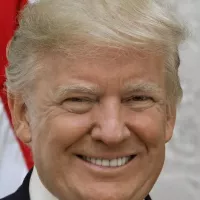
Donald John Trump is an American politician media personality and...
Fox News Channel FNC is a conservative American news and...
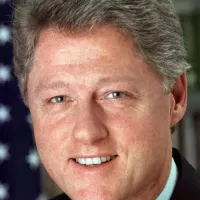
Bill Clinton the nd U S President - served as...
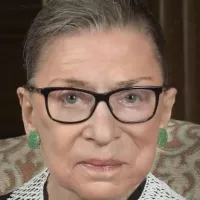
Ruth Bader Ginsburg was an American lawyer and Supreme Court...
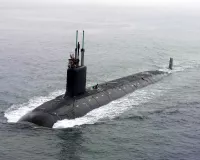
A submarine is a watercraft capable of independent operation underwater...
Morocco officially the Kingdom of Morocco is a North African...
Trending

Kyle Van Noy is an American football linebacker currently playing for the Baltimore Ravens He played college football at BYU...
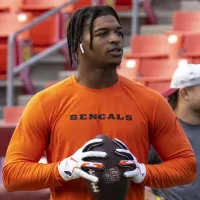
Ja'Marr Chase is a highly accomplished American football wide receiver currently playing for the Cincinnati Bengals in the NFL He...

4 months ago Travis Hunter's College GPA Sparks Buzz After NFL Debut; Coach Praises Skillset.

2 months ago Natalie Portman: Ahsoka Season 2 Theory, Miss Dior Essence, AI Actress Controversy.

6 months ago Jennifer Garner and John Miller share passionate kiss; Ben Affleck spotted solo.

Matthew Vincent Milano is an American football linebacker who currently plays for the Buffalo Bills in the NFL His college...
Popular

Candace Owens is an American conservative political commentator and author...

Ilhan Omar is an American politician currently serving as the...

XXXTentacion born Jahseh Dwayne Ricardo Onfroy was a controversial yet...

Tom Cotton is an American politician and Army veteran currently...

Kelsey Grammer is an accomplished American actor producer and singer...
The Kennedy Center Honors are annual awards recognizing individuals and...
